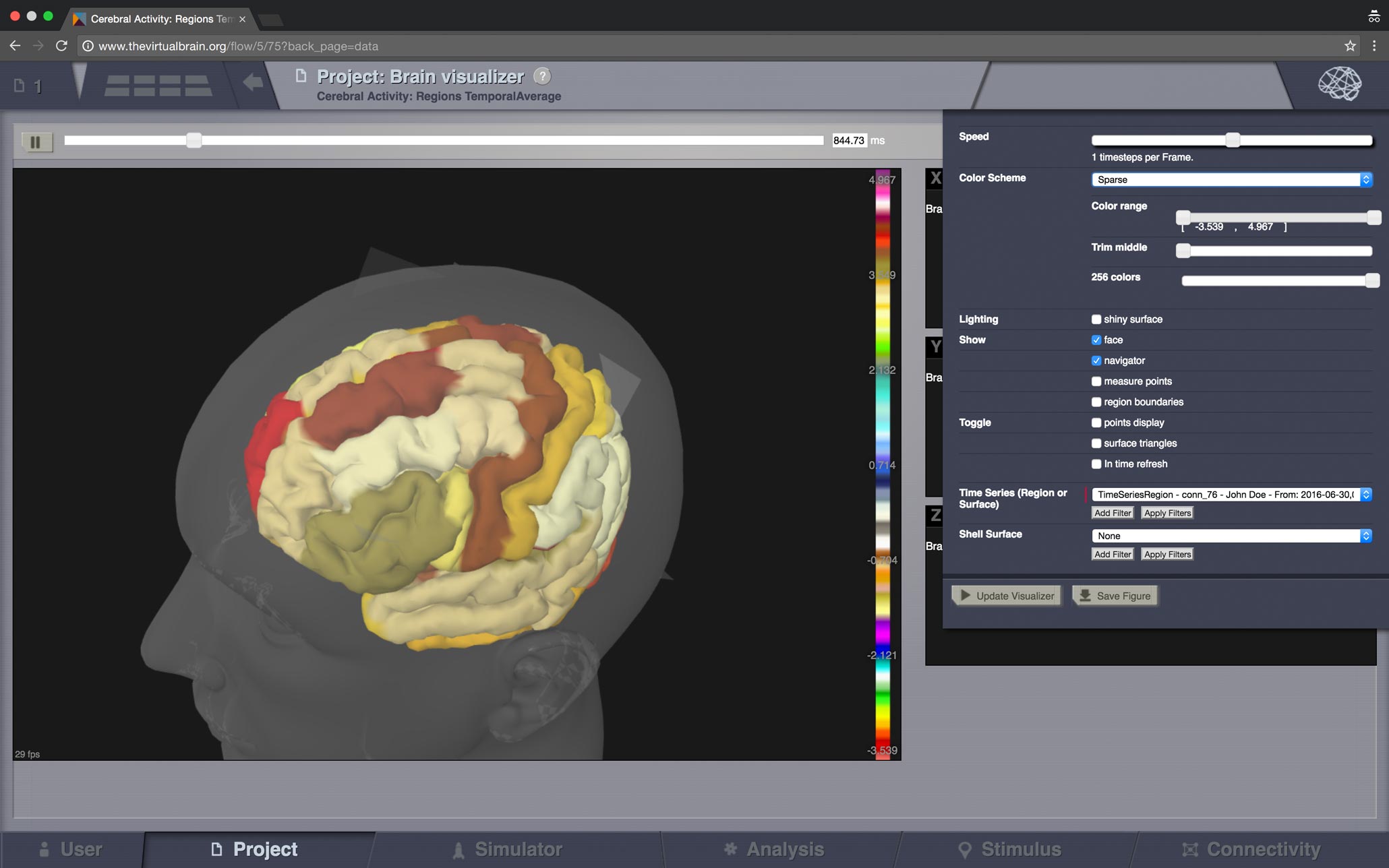The Virtual Brain (TVB)
The Virtual Brain 
Lead Institutions: AIX Marseille University, Baycrest, Charité University Medicine Berlin
TheVirtualBrain is a framework for the simulation of the dynamics of large-scale brain networks with biologically realistic connectivity. TheVirtualBrain uses tractographic data (DTI/DSI) to generate connectivity matrices and build cortical and subcortical brain networks. The connectivity matrix defines the connection strengths and time delays via signal transmission between all network nodes. Various neural mass models are available in the repertoire of TheVirtualBrain and define the dynamics of a network node. Together, the neural mass models at the network nodes and the connectivity matrix define the Virtual Brain.
TheVirtualBrain simulates and generates the time courses of various forms of neural activity including Local Field Potentials (LFP) and firing rate, as well as brain imaging data such as EEG, MEG and BOLD activations as observed in fMRI.
TVB-EBRAINS integrated workflows
TVB at EBRAINS cloud infrastructure. Brain simulation and neuroimaging workflows require personal medical data that is applicable to data protection regulation. To protect personal data the services rely on end-to-end encryption and access control. EBRAINS provides several core services: 'Drive' is a service for hosting and sharing files; 'Wiki' and 'Office' allow to create workspaces and documents for collaborative research; 'Lab' hosts sandboxed JupyterLab instances for running live code; 'OpenShift' orchestrates different services and provides resources for interactive computing; 'HPC' are supercomputing backends for resource-intensive computations. Core services interact with the different deployments of TVB services via a RESTful API and Unicore for communication with supercomputers. TVB services are deployed in the form of a Web GUI, container images, Python notebooks, Python libraries and high-performance backend codes. The TVB Processing Pipeline produces structural and functional connectomes from MRI data and its outputs can be ingested by KnowledgeGraph and annotated with openMINDS metadata, which allows re-using the connectomes in other services. The connectors show interactions between different components (colours group connectors for different deployments).
Quick links
- EBRAINS User Story for TVB: https://wiki.ebrains.eu/bin/view/Collabs/user-story-tvb/
- Main TVB web site: https://www.thevirtualbrain.org/
- Technical documentation for TVB is here: https://docs.thevirtualbrain.org/
- README about the current content: https://drive.ebrains.eu/f/7c83e516063a43c7b022/
- Code authors: https://raw.githubusercontent.com/the-virtual-brain/tvb-root/master/framework_tvb/AUTHORS
- Contact us at https://groups.google.com/group/tvb-users/
Who has access?
- TVB is open source, GPLv3 licensed: https://github.com/the-virtual-brain so you can use it locally freely
- Within HBP infrastructure you will only need an HBP account to access TVB



